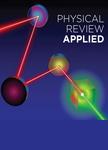版权所有:内蒙古大学图书馆 技术提供:维普资讯• 智图
内蒙古自治区呼和浩特市赛罕区大学西街235号 邮编: 010021

作者机构:Key Laboratory of Multifunctional Nanomaterials and Smart Systems Suzhou Institute of Nano-Tech and Nano-Bionics CAS Suzhou Jiangsu 215123 People’s Republic of China School of Nano Technology and Nano Bionics University of Science and Technology of China Hefei Anhui 230026 People’s Republic of China College of Electronics and Information Hangzhou Dianzi University Hangzhou 310018 People’s Republic of China Department of Mathematical and Computer Sciences Physical Sciences and Earth Sciences University of Messina Messina 98166 Italy
出 版 物:《Physical Review Applied》 (Phys. Rev. Appl.)
年 卷 期:2019年第11卷第3期
页 面:034015-034015页
核心收录:
基 金:Executive Programme of Scientific and Technological Cooperation
主 题:Magnetization switching Spintronics Artificial neural networks Magnetic tunnel junctions Ferromagnetic resonance Magnetization measurements Spiking neuron models
摘 要:Stochastic units based on magnetic tunnel junctions have shown a high energy-efficient pathway to perform neuromorphic computing. We propose a voltage-controlled spintronic stochastic device based on a magnetic tunnel junction by introducing perpendicular anisotropy into the free layer. We observe a stochastic behavior at low bias and demonstrate that this behavior can be used to mimic the artificial neurons of an artificial neural network to recognize the handwritten digits in the Mixed National Institute of Standards and Technology (MNIST) database. Furthermore, the stochastic behavior can be modulated by a bias voltage owing to the voltage-controlled magnetic anisotropy effect. The voltage-controlled stochastic behavior is theoretically and experimentally studied, which indicates that it can be used to perform as an adaptive neuron. These results provide a way for building energy-efficient spintronic neuromorphic computing systems.